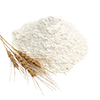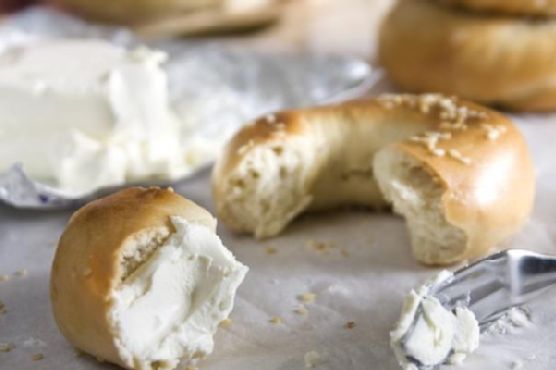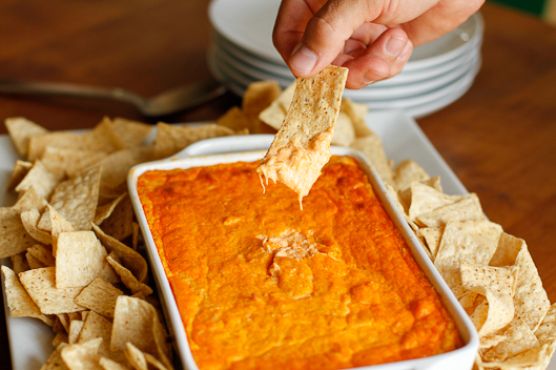Montreal style bagels
Need a dairy free and lacto ovo vegetarian side dish? Montreal style bagels could be an amazing recipe to try. This recipe serves 12 and costs 40 cents per serving. One serving contains 278 calories, 6g of protein, and 6g of fat. If you have beated egg, active yeast, kosher salt, and a few other ingredients on hand, you can make it. This recipe is liked by 4 foodies and cooks. From preparation to the plate, this recipe takes roughly 45 minutes. It is brought to you by Foodista. Overall, this recipe earns a solid spoonacular score of 65%. Try Montreal style bagels, Montreal Bagels, and Montreal Bagels for similar recipes.
Servings: 12
Preparation duration: -1 minutes
Cooking duration: -1 minutes
Ingredients:
1 ½ cups warm water
5 Tbsp. granulated sugar
3 Tbsp. sunflower oil
1 package of active dry yeast
1 Tbsp. beated egg
1 Tbsp. maple syrup
4 ¾ cups all purpose flour
1 Tsp. Kosher salt
¼ cup sesame seeds
4 quarts water
¼ cup honey
Equipment:
oven
bowl
wooden spoon
spatula
pot
baking paper
baking sheet
slotted spoon
Cooking instruction summary:
Preheat oven to 425 In a large bowl combine warm water, sugar, oil, yeast, egg, and maple syrup. Stir until the yeast dissolves. Add salt and one cup of flour. Using a spatula or wooden spoon, mix until fully incorporated. In batches of cup, add flour and mix until each addition is fully combined. The dough will become quite firm and smooth. Transfer the dough to a smooth, flat surface and knead for about 10 minutes. If the dough is sticky add more flour, one tablespoon at a time. Let the dough rest, covered, for about 10 minutes. Cut the dough in half. Divide each half again. Continue until you have 12 equal sized portions of dough. Roll each ball of dough into 10 inch long strips. Wrap the strand of dough around your hand and press down on one end with your thumb. Brush a small amount of water into the indentation and press the other end of the strip into it to create a bagel shape. Roll the dough between your palms to smooth the seam. Fill a large pot with 4 quarts of water and add the honey. Bring to a boil. While you wait for the water to boil, prepare your work station. Lay a clean dishtowel down next to your pot. Place the sesame seeds in a shallow bowl and keep nearby. Line two cookie sheets with parchment paper, set aside. When the water begins to boil, drop 3 bagels into the pot for 90 seconds, turning halfway through. When the cooking is complete, the bagels will float to the top. Using a slotted spoon transfer to the clean dishtowel to cool. Once the bagels are cool enough to handle place them into the bowl of sesame seeds and lightly press down. Turn and repeat to cover the other side. Place on the prepared cookie sheet. Continue this process until all the bagels are boiled and coated with seeds. Bake in the oven for 10 minutes. Remove from oven and turn all the bagels. Bake for an additional 10 minutes until they are evenly browned. Cool on a rack and store in an airtight container.
Step by step:
1. Preheat oven to 425
2. In a large bowl combine warm water, sugar, oil, yeast, egg, and maple syrup. Stir until the yeast dissolves.
3. Add salt and one cup of flour. Using a spatula or wooden spoon, mix until fully incorporated.
4. In batches of cup, add flour and mix until each addition is fully combined. The dough will become quite firm and smooth.
5. Transfer the dough to a smooth, flat surface and knead for about 10 minutes. If the dough is sticky add more flour, one tablespoon at a time.
6. Let the dough rest, covered, for about 10 minutes.
7. Cut the dough in half. Divide each half again. Continue until you have 12 equal sized portions of dough.
8. Roll each ball of dough into 10 inch long strips. Wrap the strand of dough around your hand and press down on one end with your thumb.
9. Brush a small amount of water into the indentation and press the other end of the strip into it to create a bagel shape.
10. Roll the dough between your palms to smooth the seam.
11. Fill a large pot with 4 quarts of water and add the honey. Bring to a boil.
12. While you wait for the water to boil, prepare your work station.
13. Lay a clean dishtowel down next to your pot.
14. Place the sesame seeds in a shallow bowl and keep nearby. Line two cookie sheets with parchment paper, set aside.
15. When the water begins to boil, drop 3 bagels into the pot for 90 seconds, turning halfway through. When the cooking is complete, the bagels will float to the top. Using a slotted spoon transfer to the clean dishtowel to cool. Once the bagels are cool enough to handle place them into the bowl of sesame seeds and lightly press down. Turn and repeat to cover the other side.
16. Place on the prepared cookie sheet. Continue this process until all the bagels are boiled and coated with seeds.
17. Bake in the oven for 10 minutes.
18. Remove from oven and turn all the bagels.
19. Bake for an additional 10 minutes until they are evenly browned.
20. Cool on a rack and store in an airtight container.
Nutrition Information:
covered percent of daily need















